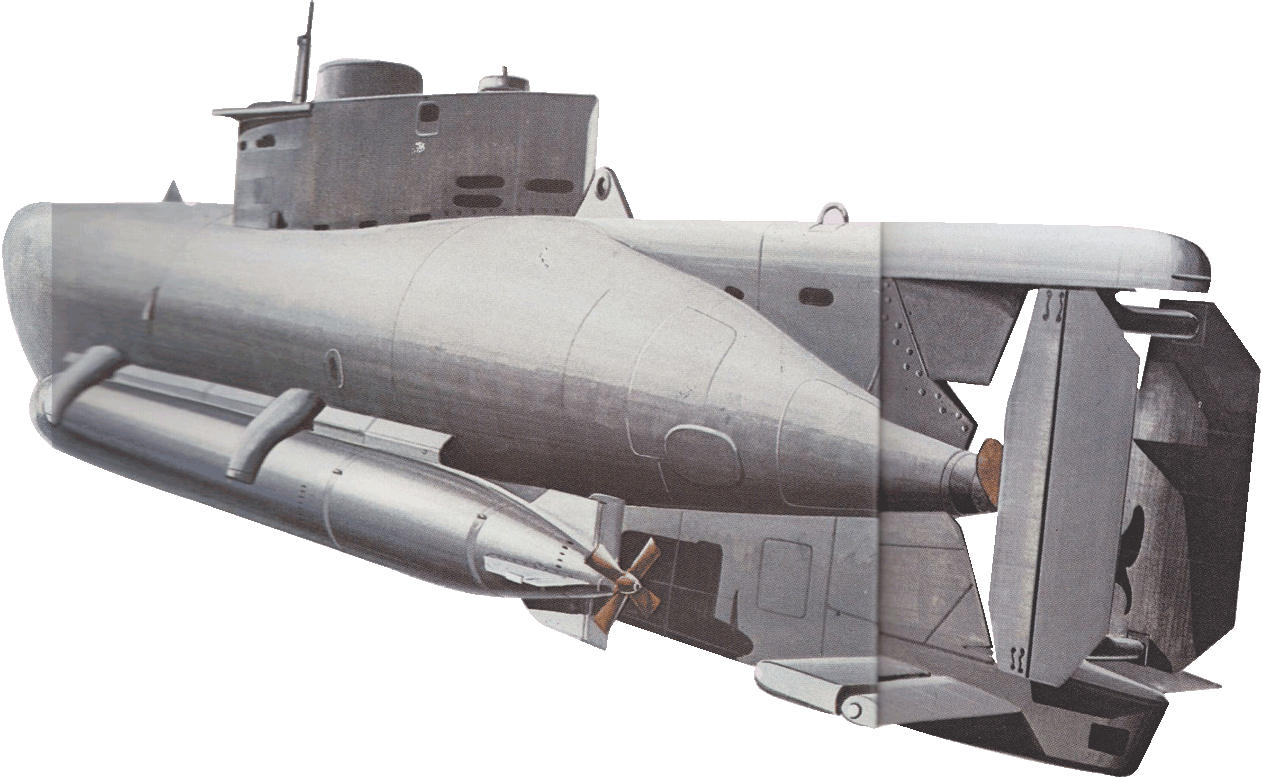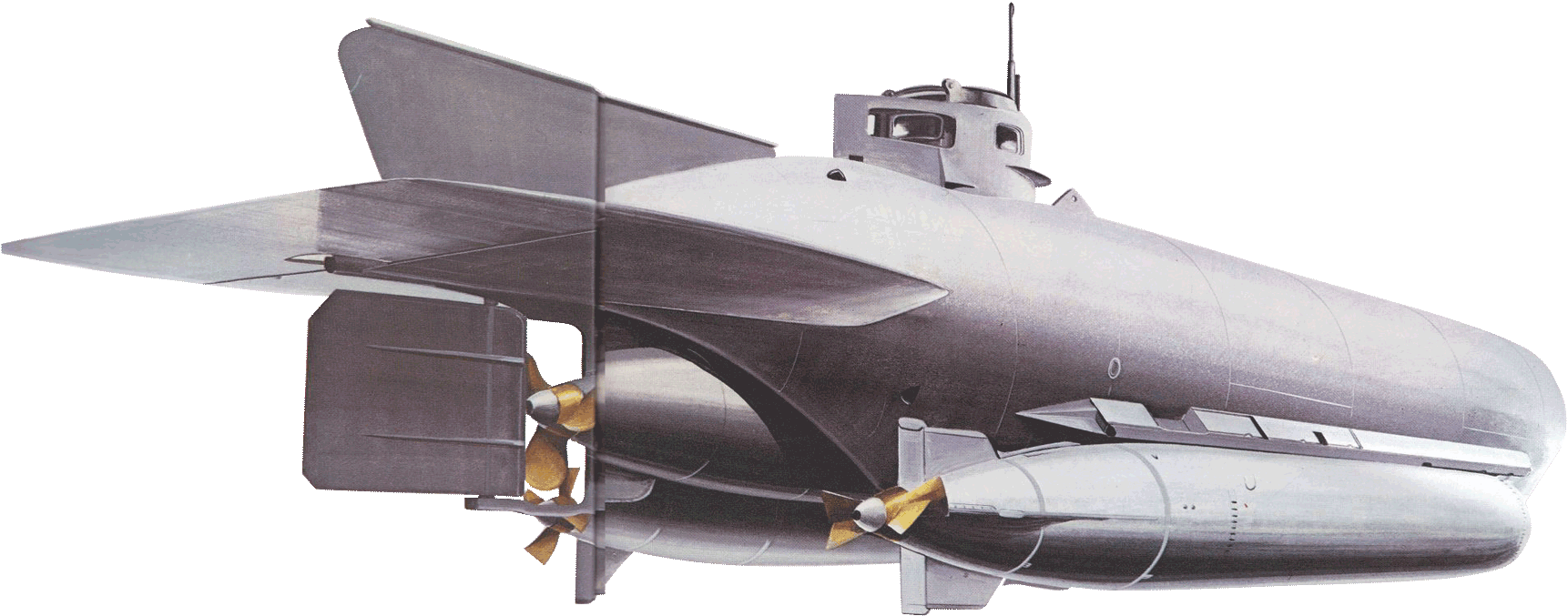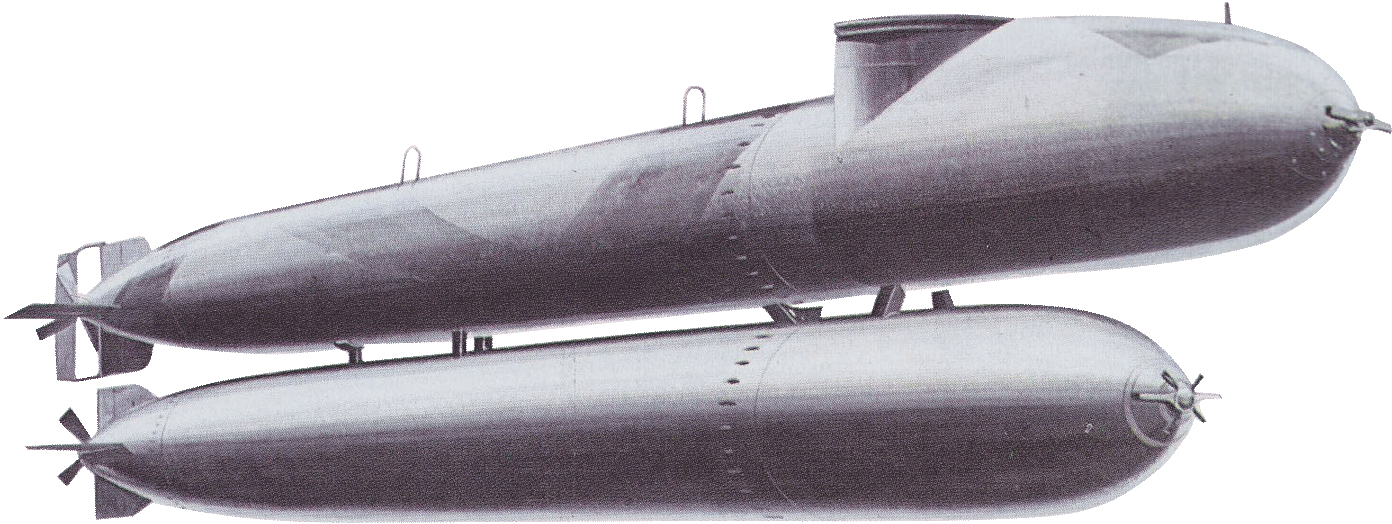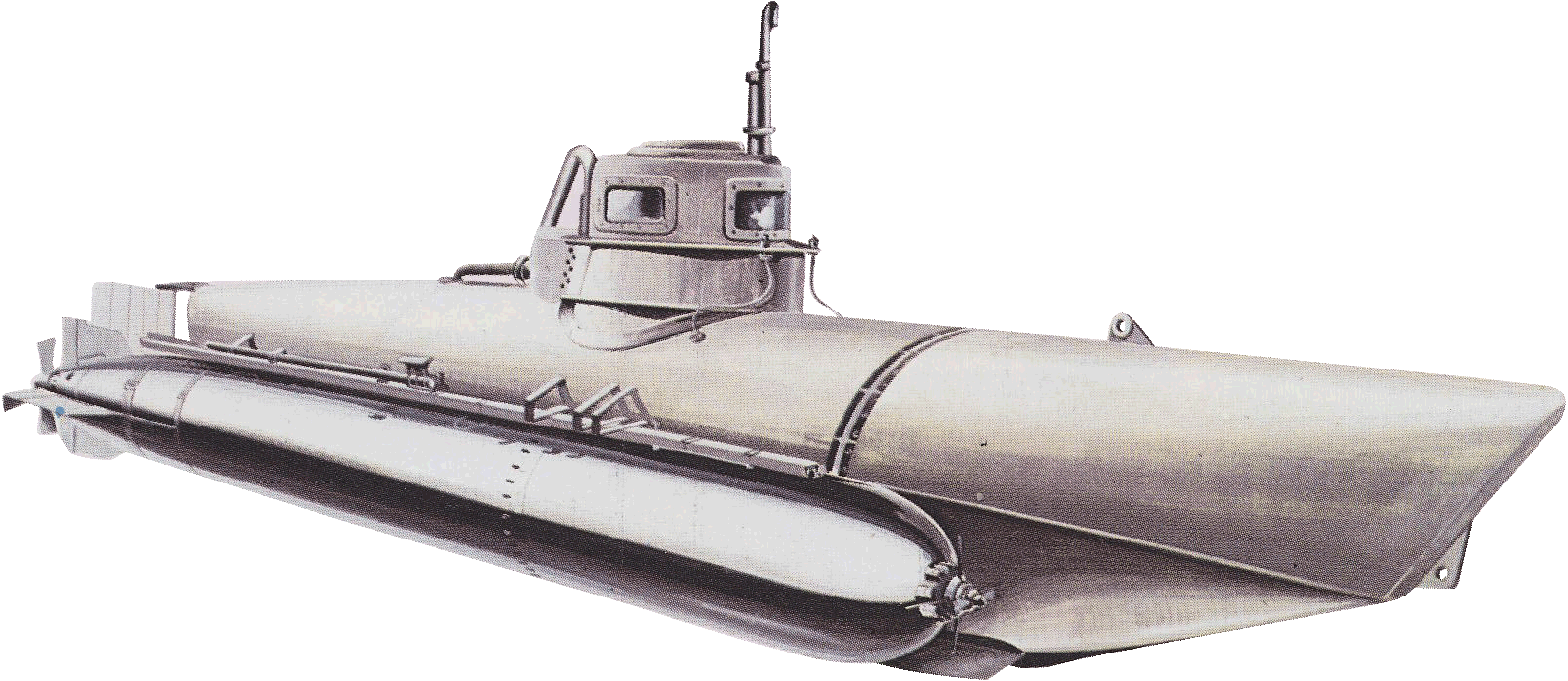
ANTONY PRESTON, JOHN BATCHELOR
THE SUBMARINE SINCE 1919
At the start of 1943 both sides were in a strong position. The U-Boats were well led and their achievements in 1942 meant that officers and men were experienced. Against them were ranged a growing force of aircraft and ships equally determined and skilled. Behind both antagonists were the designers and scientists, whose influence would prove decisive.
The first round went to the U-Boats in March. Acting on intelligence gathered after German cryptanalysts broke into the British convoy cypher, Admiral Dönitz arranged a heavy concentration of U-Boats against two eastbound convoys. This led to a successful interception, by a total of 39 U-Boats, of the slow convoy 5C-122, totalling 52 ships, and the faster HX-229, with only 25 ships. Finding the fast convoy first, the U-Boats were able to sink eight ships in a space of less than eight hours. The slow convoy fared rather better when another group of U-Boats attacked, but one U-Boat, U338, was able to sink four merchant ships with five torpedoes. During the next three days the convoys were joined to give their escorts a chance to fight back, but even this did not prevent the U-Boats from sinking another nine ships. In all 140,000 tons of shipping had been sunk, for the loss of only three U-Boats.
This great convoy battle marks the high point of the U-Boat offensive. Dönitz almost achieved his dream of making the convoy system unworkable, for the immediate reaction at the Admiralty was to consider the reintroduction of independent sailings until fresh counter-measures could be devised. At no time did Hitler come closer to victory, for if his U-Boats had cut communications between Britain and North America, not only would the British have been starved into impotence, but he would have been free to turn his whole might against Russia. Fortunately March 1943 was the turning point, and the U-Boats were shortly to receive their most devastating setback.

German Type XXI. The famous "Electro-submarine" designed in 1943 in a desperate attempt to win back the initiative in the Battle of the Atlantic. The Type XXI introduced ideas which influenced all post-war submarine design, including a streamlined hull, rapid reloading for the torpedo-tubes and enlarged battery capacity. By adopting prefabrication Admiral Dönitz hoped to put the Allies back on the defensive by 1944 but production difficulties were never overcome, and only a handful were ready at the surrender in 1945. Displacement: 1,621 tons. Armament: Six 21-in torpedo-tubes (23 torpedoes carried); four 30-mm or 20-mm AA guns. Speed: 15,5 knots (surfaced) , 16 knots (submerged)
The first gleam of hope for the Allies was the intervention' of escort carriers and support groups, which had been held back to cover "Operation Torch". With that landing successfully achieved, all the vital ships and aircraft which had been taken away from the Atlantic were now thrown back into the battle. Then President Roosevelt intervened to make 61 VLR Liberators available to the RAF, a welcome reversal of policy. But the scientists made the biggest contribution, for they had perfected a shortwave radar set for use in aircraft, the ASV (Air to Surface Vessel) set. ASV transmissions could not be picked up by the U-Boats' existing radar receivers, and losses to aircraft attack rose alarmingly. In May another great convoy battle was fought, but this time aircraft and two support groups intervened, with the result that eight out of twelve U-Boats were lost. It was in a frantic effort to find an answer to this unexpected reversal of fortune that the U-Boat Command committed two fundamental blunders.
Basing his calculations on the premise that the Metox receiver would give ample warning of any radar-assisted attack, Dönitz decided that submarines could meet aircraft on equal terms provided that each U-Boat had its anti-aircraft armament increased. Conning tower platforms were extended, and a variety of weapons was added forward and aft. The common weapon was the 2-cm Flak "vierling", a deadly four-barrelled automatic weapon, but single 2-cm and 37-mm weapons were also added, and twin 2-cm. As the main opponents were Sunderland flying boats and Liberator bombers, neither of them very fast or manoeuvrable aircraft, such an array of guns made a surfaced U-Boat an ugly customer, particularly when air crew were not expecting her to stay on the surface to fight it out.
This was the first of the blunders made by Dönitz and his advisers, for skilled air crew did not take long to devise tactics which neutralised the so-called "aircraft trap". They simply flew around the U-Boat out of range, while calling up the nearest warship to come and sink her; if at any time the
U-Boat started to dive, the aircraft then rapidly switched to the attack. This led to the "Battle of Seconds", the U-Boat crews' term for the vital 30-40 seconds needed to clear decks before diving, and many inexperienced U-Boat personnel died simply because they could not get below fast enough.
The second error made by the Germans was a more technical one. Faced with disturbing reports from U-Boat commanders about attacks from aircraft at night when the Metox receiver had given no indication of a radar search, the German scientists refused to consider the possibility of centimetric wave-bands on the grounds that they had already tried this idea without success. A similar reluctance to accept the existence of H/F-D/F in 1942 had caused casualties, but in the spring of 1943 such a mistake was deadly.
The problem was not helped when a captured British bomb-aimer casually revealed that aircraft could track the emissions from a Metox set. When the Germans found that the Metox set did produce emissions which could be tracked, they jumped to the wrong conclusion, and blamed the Metox for all their problems.
However, a new receiver which cured the fault did nothing to halt the sinkings, and only when it was too late to affect the outcome did the Germans discover that however many signals were emitted by the Metox, the centimetric wave-band of the ASV set gave far more accurate bearings, and it was this which was causing the losses.
The collapse of the U-Boat campaign was dramatic. In May a pair of convoys like SC-122 and HX-229 reached Britain without loss, having sunk six U-Boats on the way. In the same month escorts achieved a record, with more U-Boats than merchant ships sunk, and the figures show how savagely the escorts were mauling the U-Boats in revenge:
Month Shipping sunk U-Boats sunk
April 245,000 tons 15
May 165,000 tons 40
June 18,000 tons 17
July 123,000 tons 37
Dönitz had no choice but to withdraw his U-Boats from the battle and concede a temporary defeat, while his technicians and scientists worked on the new weapons which were under development.

German Type XVIIB U1407/Meteorite. U1407 was one of the peroxide-engined Type XVIIB U-Boats which fell into British hands in 1945. As HMS Meteorite she was run for four years to gain experience with the Walther propulsion system, and although a speed of 20 knots was reached she proved highly dangerous

German Type XVIIB U1407/Meteorite. Displacement: 312 tons surfaced. Armament: Two 21-in torpedo-tubes (4 torpedoes carried). Speed: 8 knots (surfaced) 20 knots (submerged)
The new acoustic torpedoes have been mentioned, but there was also the "Schnorchel", that half-forgotten Dutch device for running diesels at periscope depth. It was hurriedly introduced into service, and was made a Standard fitting for new construction as a move to reduce the crippling losses from aircraft. There were passive devices as well, such as the "Pillenwerfer" or Submarine Bubble Target (SBT), which was a chemical compound released from a torpedo-tube; it acted like a giant Alka-Seltzer to produce bubbles which gave a false Asdic echo, but rarely fooled an experienced operator. Periscopes and even hulls were coated with rubber compounds which it was hoped would absorb Asdic and radar pulses, but again these measures were only partially effective.
The ace up the Germans' sleeve was the new Walther propulsion system, which promised to revolutionise submarine warfare. This was basically a closed cycle steam turbine, which burned an oxidant with oil fuel to dispense with atmospheric oxygen. The Walther system used a concentrated form of hydrogen peroxide known as Perhydrol which decomposed and was burnt with the oil fuel to produce a mixture of gas and steam which drove the turbine. It offered far more power than electric propulsion, and promised underwater speeds in excess of 25 knots.

German "Seehund" Type Midget (Type XXVIIB). This two-man midget was developed from the XXVIIA "Hecht", and was the most successful of the German midgets. Like the others, it was armed with underslung torpedoes. Some 450 were completed by 1945 and a further 650 were cancelled. Displacement: 15 tons (surfaced). Armament: Two 21-in torpedoes Speed 7¾ knots (surfaced) 6 knots (submerged)
The first Walther turbine had been tested in an experimental submarine as far back as 1940, but the first production U-Boat to receive it was U791. She was not commissioned, but experience with her was incorporated into the Type XVIIA U-Boats, which were coastal submarines powered by two Walther turbines coupled to a single shaft, and capable of about 25 knots. Under considerable pressure from U-Boat Command, the designers produced drawings for improved types, the XVIIB and XVIIG, but to speed construction only one of the turbines was installed. Despite this a speed of 20 knots was attained, more than double that of the conventional Type VII and Type IX U-Boats in service.
There were many drawbacks, however, and the Walther submarine must rank with some of Hitler's more bizarre tank projects as an interesting idea which absorbed far too much material and time at the expense of less ambitious projects which were suffering setbacks.

German "Molch" Type Midget. A third one-man type, from a different builder. Molch was similar to Biber, and nearly 400 were completed
The chief difficulty was in the manufacture and storage of the fuel, known as "Ingolin". This was highly unstable, and any impurity in the storage tanks led to decomposition and spontaneous combustion; only clinical sterility would do, and eventually synthetic rubber was discovered to be the least dangerous material for lining the tanks. Ingolin was also very expensive to make, costing about eight times as much as oil, and was consumed at a prodigious rate, so that a Type XVIIA boat could only travel 80 miles at top speed - which put the clock back to about 1900 as far as operational radius was concerned.
These problems were realised by Dönitz, and at a conference with Hitler in July 1943 he mentioned the existence of a new interim design known as the "Electro" submarine, which was to bridge the gap between the ordinary schnorchel-equipped U-Boats and the first Type XVII boats. This was the famous Type XXI, actually a conventionally- propelled submarine, but redesigned to make use of every possible advance to offset the recent Allied successes. The improvements can be summarised as basically a streamlined hull to reduce underwater drag, and enlarged battery-capacity to give higher underwater speed. Had the Type XXI been available in greater numbers in 1944 U-Boats might have made a comeback and inflicted casualties at the 1942 level.

German "Marder" Type Midget. A one-man torpedo, with a G7E torpedo slung underneath the main body. About 300 Marders were completed
To boost the underwater speed from 9 knots to 15t knots it was necessary to treble the battery capacity, but they were also fitted with silent auxiliary motors for "creeping" at 5 knots. To allow attacks from safer distances the torpedo salvo was increased to six tubes, and 17 reloads were carried. Wartime experience showed that a torpedo-tube took at least 10 minutes to reload by hand, so the Type XXIs were given mechanical loading to reduce the strain on the crew and to give them the chance to follow up an attack quickly. Although the conventional conning tower had given way to a streamlined "fin", the menace of aircraft called .for two pairs of AA guns in remotely controlled positions on top of the fin.
Dönitz promised Hitler that the first Type XXI U-Boat would be ready in November 1944, but Hitler immediately demanded that the Konstruktion-Amt should do better, even if it meant three-shift working. Reichs-minister Albert Speer was given the job of organising the mass-production of Type XXIs, and he hoped to produce 20 per month. But in that strange mixture of efficiency and muddle which characterised the war effort of the Third Reich, the obsolescent Type VIIC was allowed to continue in production, while the Type XXI was entrusted to "diluted" labour, i.e. a small proportion of skilled workmen padded out with old Mien, women and even children.
The territorial ambitions of the Germans now proved their undoing. The Army's need for manpower and the aircraft industry's over-riding demands for strategic materials meant that even if the U-Boat programme had been completed it was unlikely that the boats could have been manned. Dönitz told Hitler that in the second half of 1943 production would be running at 27 U-Boats per month, and it was hoped to increase this to 30 per month by 1945. But the existing programme was using 6,000 tons of steel each month, 4,500 tons for U-Boat hulls and 1,500 tons for torpedoes. He also pointed out that if production rose to 40 U-Boats per month extra personnel would have to be found. The Kriegsmarine's allowance was 102,984 men, and the estimated manpower requirement was already 334,838 men short.

German "Biber" Type Midget. Another one-man type, but armed with two torpedoes. Over 300 were completed. Like Marder, Biber was intended for use against invasion fleets, and could be moved by road or rail to their area of operations
The Army had taken the largest amount of manpower since April 1942, when Hitler had been preparing for his ill-conceived invasion of Russia. At the 1943 rate of U-Boat production (25-30 boats per month) this left the Navy short of 200,000 men. The officer candidates who had entered in the autumn of 1939 had all become commanders by the summer of 1943, and it would be necessary to transfer some officers from the Army and Air Force to make up numbers. This was finally done, and many of the "expatriate" submariners proved successful, but it is easy to see why the sledgehammer blows of the Allies in the spring of 1943 were able to bring about the collapse of morale in the U-Boat Arm. All had given of their best, and continued to do so, but there was no way of wringing greater effort out of them.
Although the U-Boats continued to be dangerous, throughout the rest of 1943 and 1944 they lacked the ferocious determination that had characterised their earlier efforts. The schnorchel was partly to blame, for its value was negative rather than positive; while using it a U-Boat was relatively safe, but she did not have that freedom of movement which she had once enjoyed on the surface. Even her dangerous acoustic torpedoes were rendered harmless by noise-makers towed astern of escorts, known as "Foxers", and the schnorchel could be detected by radar in smooth conditions. The invasion of Normandy in 1944 meant the end of the Biscay and Brittany bases, and the loss of Italy closed the Mediterranean to U-Boats. The only area in which U-Boats still enjoyed any measure of success was in Northern Norway and the Arctic, against Allied convoys to Russia.
The emphasis switched to midget submarines and special assault craft known generically as "K-craft", to hold up invasion fleets. Many different types were built, but they scored very few successes, even against the vast D-Day Invasion fleet of 5,000 ships. The best-known were the "Molch" (Salamander), "Hecht" (Pike), "Seehund" (Seal), "Biber" (Beaver), "Marder" (Marten) and "Neger" (Negro) of which the Seehund type proved the most successful. Like all midgets they were only effective in fairly sheltered waters, and Allied counter-measures were sufficient to avoid serious losses. However they did prove one interesting point: they were so light that the blast from a depth-charge merely swept them aside without sinking them. The effect on the crew is not recorded.
Finally the first Type XXI U-Boats were finished, and four were commissioned early in 1945. But it is not possible to put a revolutionary type of submarine straight into service, and U2511 did not leave for her first operational patrol until a week before the German surrender. A smaller, cruder coastal version, known as the Type XXIII, had come into service a little earlier, and although the handful completed had a few successes they were also too late.
The end came on 7 May 1945, when Dönitz, by now Hitler's successor and also head of the German Navy, broadcast instructions to all U-Boats to cease hostilities and to comply with the Allies' conditions. They were told to surface, and to fly a black flag while making their way to the nearest warship to make a formal surrender. In this way hundreds of U-Boats made their way to Lisahally in Northern Ireland. There they lay in their melancholy lines, just as they had at Harwich in 1919. Twice in a generation U-Boats had taken on the world, twice they had nearly won a great victory, and now they had failed once again.
We have much more interesting information on this site.
Click MENU to check it out!
∎ cartalana.com© 2009-2025 ∎ mailto: cartalana@cartalana.com